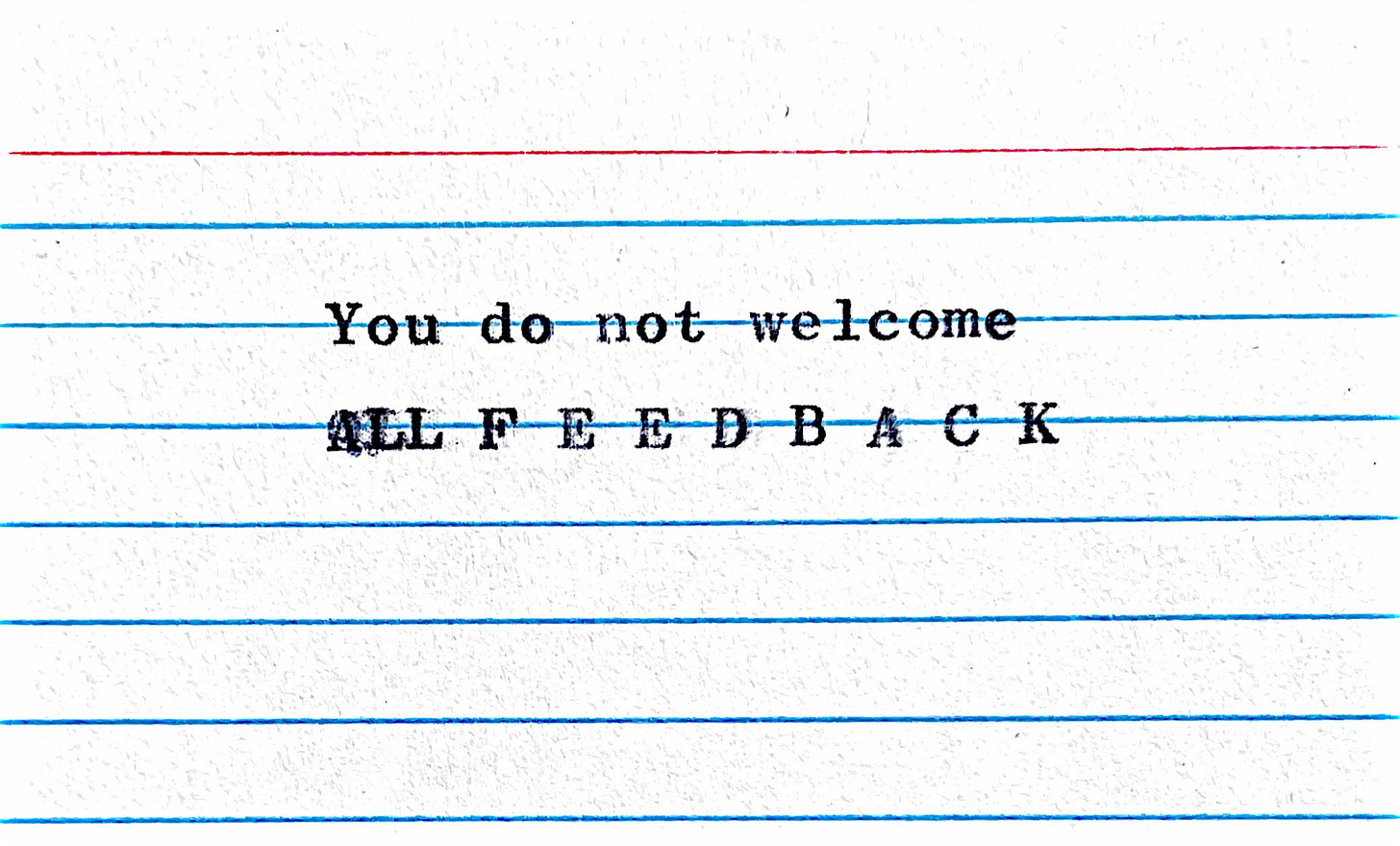You do not welcome all feedback
Because you have boundaries, darling
“The return of a fraction of an output signal to the input of an earlier stage.”
–Patent GB130432, Improvements in or Relating to Electrical Signalling Systems, 1919
You’re looking some perspective to help you get unstuck. So you slap your baby on the table and declare, “All and any feedback is welcome.” Well friends, that is poppycock. You do not welcome all feedback.
Because you’re the expert. You know which boards are loose already.1 You don’t need a barrage of sledgehammers testing every wall. You need feedback. A fractional return, from outside the system, back to the source.
To eke signal from the noise, you must fine-tune the process of feedback:
Establish the scope of work: “I’m not taking feedback on the fins.”
Highlight the problem to avoid tangents: “I’m stuck on the color.”
Compel hard choices: “Rank by effectiveness.” Or “Which would you eliminate?”
Remove preferences altogether. Swap “Do you like it?” with “How well does this acheive {
specific goal}?”
If you don’t shape the feedback, folks will improvise and that’s rarely helpful—even in jazz. From The Universe Is Not Binary:
Critiques that reduce the efforts of an artist or creator to “good” (👍🏽) or “not good” (💩) aren’t worth a damn. Criticism that reflects the how, what, and why of something? That’s what’s up (👻).
Asking for scattershot feedback is also hard on your heart.
They’ll never know how “The fins look weird” slides your insides to shreds. This isn’t about being sensitive. If you’re any good at your craft, you will (you must!) have an emotional connection to your work.
It’s your duty to frame the feedback process to protect your creative spirit. It’s simply part of being a functional human adult with boundaries. You would never accept notes on your appearance or personality during a critique, would you?
Of course not. Because you do not welcome all feedback.
And if you’re completely lost, go ahead and throw the damn thing to the wolves.


